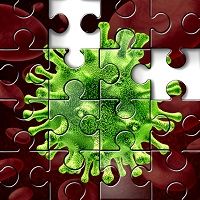Crucial Hepatitis C Replication Discovery Could Lead to Vital Treatments
Preventing the replication of the hepatitis C virus (HCV) may be a future reality thanks to an important exploration.

Preventing the replication of the hepatitis C virus (HCV) may be a future reality thanks to an important exploration.
With the majority of patients living with chronic HCV, as opposed to acute, uncovering how the liver disease functions inside of the body is imperative. Researchers from the University of Southampton identified the cell membrane as a key player in the replication process.
“This gives us an important lead on how changes in lipid content in the membranous web help drive membrane remodelling,” co-author Chris McCormick, BSc, DPhil, PGCertED, said in a news release.
It has been understood that the HCV protein NS4B creates a ‘membranous web’ with ‘reaction centres’ in order to protect the pathogen as it replicates within a cell. Although it is known that the AH2 peptide inside NS4B plays a role in forming that membranous web, the way that it causes such changes is not. The team used nuclear magnetic resonance (NMR) spectroscopy and molecular dynamics (MD) to find that AH2 interacts with negatively charged lipid membranes inside of the cell.
“It causes them to become more malleable, a property almost certainly important in reaction centre formation,” the statement said.
Published in Biochimica et Biophysica Acta, the researchers were able to interfere with this process. When they introduced non-charged lipids into the membranes, larger complexes formed which limited deformation.
“Now we begin to understand at the molecular level how HCV hijacks cellular membranes to aid its replications,” co-author Phil Williamson, BA (Hons), MA, DPhil, explained. “We can use this information to help identify novel sites for therapeutic intervention to target HCV and similar viruses.”
The disease has infected 170 million people worldwide and the World Health Organization (WHO) has even added 5 HCV drugs to its essential medicines list. Therefore, understanding its course as much as possible can lead to improved therapeutic drugs.
“The challenge for us now is to use the same interdisciplinary approach to link these activities with other maturation events seen inside the infected cell,” McCormick concluded.